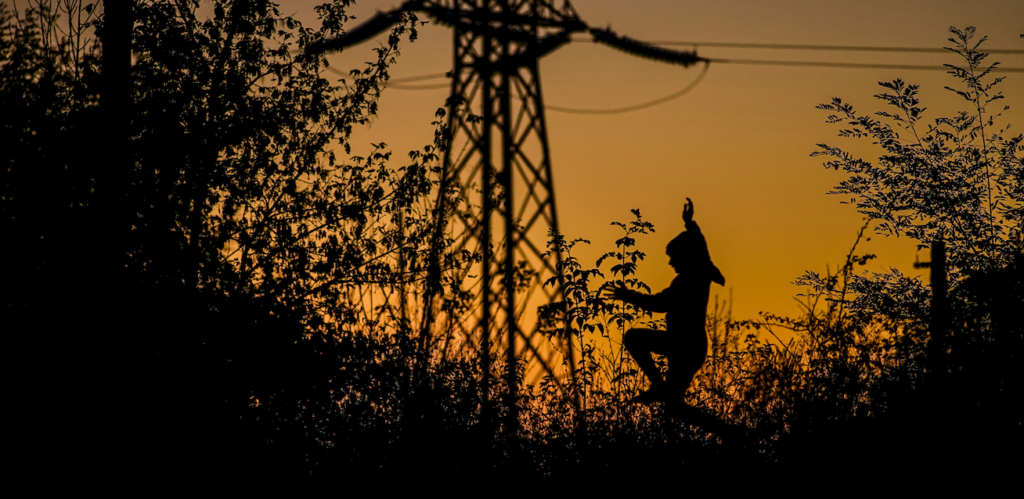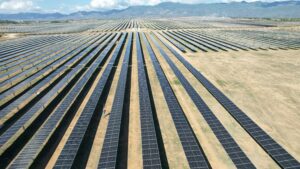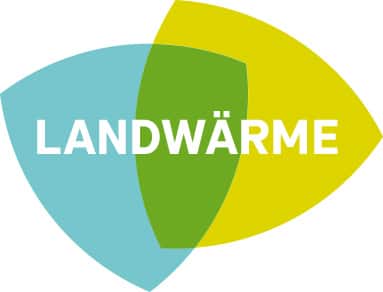Fueling fairness: energy poverty in a decarbonising world

by Stephania Mosquera López and Macarena Larrea Basterra, Orkestra
How can a just transition contribute to mitigating energy poverty?
The importance of the universal provision of energy services was only recognised in 1986 in the Brundtland Report1. This report indicated that energy services are crucial to development, particularly in providing adequate food, shelter, clothing, water, sanitation, health care, education, and access to information. Energy is, therefore, a vital dimension of poverty and development, and it is necessary to ensure a minimum level of access to energy services for everyone.
Energy poverty is an issue that has taken more than two decades to be recognised as a societal challenge by academics and policymakers, as previously it was considered a consequence of poverty2. It was only in 2015 that energy poverty was explicitly included in the framework of the Sustainable Development Goals (SDGs) for 2030.
Specifically, SDG 7 aims to ensure access to affordable and clean energy. Its key role in achieving development in agriculture, business, communications, education, health, and transport is recognised3.
Target 7.1 of the SDG (ensure universal access to affordable, reliable, and modern energy services) is expected to be challenging to achieve since, at the current rate, in 2030, about 773 million people in the world (about 1 in 10) will still lack access to electricity and about 2.4 billion will continue to rely on polluting fuels for cooking4.
In this line, not enough attention has been paid to energy poverty despite the magnitude of the problem and its impact on people’s physical and mental health, the consequences of which are still relatively unknown5.
The determinants of energy poverty
Studies on energy poverty have mainly focused on the economic dimension of the phenomenon, with household income and expenditure, consumption patterns, and energy prices being the main determining variables. However, in the context of climate change and energy transition, the technological, environmental, and social dimensions of energy poverty are becoming increasingly important6.
The technical dimension related to energy efficiency and housing conditions has also been explored as a determinant of energy poverty. In fact, with low incomes and high energy prices, energy efficiency is considered one of the main determinants of energy poverty in the European Union. However, the incidence of developing energy infrastructure and electricity generation regarding availability, quality, and reliability in energy poverty is also crucial.
In the case of the environmental dimension, climate and natural resources determine both energy demand and supply, so extreme weather events affect households’ energy needs and supply sources. In the social dimension, variables such as social exclusion, levels of participation in decision-making, rural and urban characteristics, family structure, and gender can be determinants and consequences of energy poverty.
The technical dimension and the deployment of renewable energy
As the energy transition promotes technological changes in the energy system, it will substantially affect energy poverty and mitigation options.
On the one hand, the development of renewable energies could contribute to energy poverty mitigation if the lower generation costs of these technologies are eventually passed on to the final consumer. However, this price decrease is not guaranteed as the retail price or electricity bill does not only depend on generation costs.
On the other hand, a more direct contribution to the mitigation of energy poverty can be made through the implementation of local renewable energy projects, where avenues for community participation, employment generation, promotion of local economic development, and reduced electricity bill prices, among others, can be offered.
The impact of renewables on energy poverty depends on whether they effectively include vulnerable households in their distribution of benefits. This benefit-sharing depends on the project’s ownership structure, where those with partial or full community ownership may have greater benefits for households7. Thus, distributed energy resources (DER), prosumerism, and energy communities can be key in addressing energy poverty in the energy transition.
In short, the transition to clean energy sources may involve high up-front costs, making it difficult for households in energy poverty to access these technologies. Similarly, the benefits of the energy transition, such as energy efficiency or the use of renewable energy, may not reach all parts of the population equally, which could perpetuate the energy gap.
The environmental dimension and climate change
Climate change has the effect of increasing temperatures over time, leading to the occurrence of extreme weather events such as floods, storms, droughts, and very high or low temperatures. In this way, climate change directly impacts energy poverty through shocks to energy supply (e.g., reduced wind production during high wind periods) and household energy demand (e.g., increased cooling demand during heat waves).
These impacts will vary depending on the initial climate of the territories, with warmer climates facing much higher temperatures than traditionally colder ones. Extreme temperatures, whether much colder or warmer, can negatively affect human health, increasing morbidity, respiratory and cardiovascular problems, and even mortality in harsh winters or hot summers.
In the Global North, the focus has been on whether people can adequately heat their homes, but as temperatures continue to rise, cooling needs will become more important. In fact, without policy interventions to improve energy efficiency, cooling energy demand will triple by 2050, becoming the main driver of electricity consumption8.
Few studies have looked at the impact of climate change directly on energy poverty, and they have mainly focused on analysing the problem in countries in the Global South, as this is where climate change will have the greatest consequences, despite the lower carbon footprint of these territories9.
This, in turn, increases the vulnerability of households living in energy poverty, affecting the availability and accessibility of energy resources. It also affects, as mentioned, people’s health and productivity, affecting their ability to cope with energy costs.
The social dimension and a just transition
A just energy transition must also consider social aspects, so that the benefits and costs of the transition are distributed fairly, with particular attention to vulnerable groups. However, the social dimension still lags on the political agenda, where mitigating energy poverty is often seen as a side-effect of sustainability measures, and technical and economic aspects take centre stage.
In this context, the concept of ‘energy citizenship’ has emerged in the literature, which emphasises the need for a meaningful engagement of citizens in the energy transition beyond passive consumption. It implies their participation in decision-making processes and innovations, with the aim of achieving a more democratic and fairer energy model. However, unequal access to resources can lead to exclusion from the transition, especially for those facing energy poverty10.
Recent literature explores the link between ‘energy citizenship’ and energy poverty, highlighting that ‘energy citizenship’ must go beyond an individual sphere, where the active participation of households in or vulnerable to energy poverty develops from the collective and through measures that promote their empowerment and address energy inequities10.
Communities and citizens are empowered to act and participate in decision-making if they are knowledgeable about technological and social innovations, receive skills development training, have the opportunity to participate in decision-making, and have control over available resources11.
Thus, the just transition and citizen empowerment framework to tackle the energy poverty problem focuses on the need for social innovation, where not only government and public entities can contribute to its mitigation, but also gives room for social business innovation, as an approach that involves all actors is required12.
Tackling energy poverty and the decarbonisation of the energy mix
Mitigating energy poverty requires progress in its study, measurement, and policy design that integrates the changes that rising temperatures, extreme weather events, and changes in the energy system can generate. A robust analytical framework is required that considers all energy poverty dimensions and the cross-cutting impact that climate change and the energy transition may have on them.
The design of policies and measures should be based on a clear taxonomy of the dimensions and variables that affect energy poverty. This phenomenon must be addressed comprehensively and equitably, developing not only technological innovations and financing instruments, but also social innovations where vulnerable households can be represented and included in an energy transition that must be comprehensive and just.
References
- World Commission on Environment and Development. Report: Our Common Future. (1986).
- Creutzfeldt, N., Gill, C., McPherson, R. & Cornelis, M. The Social and Local Dimensions of Governance of Energy Poverty: Adaptive Responses to State Remoteness. J Consum Policy 43, 635–658 (2020).
- Naciones Unidas. Objetivos de Desarrollo Sostenible. https://www.un.org/sustainabledevelopment/es/objetivos-de-desarrollo-sostenible/ (2015).
- UNDP. Our Work Area. Energy Access. https://www.undp.org/energy/our-work-areas/energy-access (2023).
- Charlier, D. & Legendre, B. A Multidimensional Approach to Measuring Fuel Poverty. The Energy Journal 40, 27–54 (2019).
- Mosquera López, S. & Larrea Basterra, M. Pobreza energética Norte y Sur Global. ¿Dos perspectivas diferentes de un mismo problema? (2024).
- Mosquera López, S. & Fernández Gómez, J. Aceptación Social de Proyectos de Energía Renovable Locales. https://www.orkestra.deusto.es/es/investigacion/publicaciones/informes/cuadernos-orkestra/2670-230063-aceptacion-social-proyectos-energia-renovable-locales (2023).
- IEA. The Future of Cooling. https://www.iea.org/reports/the-future-of-cooling (2018).
- IPCC. AR6 Synthesis Report. Climate Change 2023. https://www.ipcc.ch/report/ar6/syr/ (2023).
- DellaValle, N. & Czako, V. Empowering energy citizenship among the energy poor. Energy Research & Social Science 89, (2022).
- Coy, D., Malekpour, S., Saeri, A. K. & Dargaville, R. Rethinking community empowerment in the energy transformation: A critical review of the definitions, drivers and outcomes. Energy Research & Social Science 72, (2021).
- Manjon, M.-J., Merino, A. & Cairns, I. Business as not usual: A systematic literature review of social entrepreneurship, social innovation, and energy poverty to accelerate the just energy transition. Energy Research & Social Science 90, (2022).
Related contents
Stay in the know
Get the Lights on Women newsletter.







